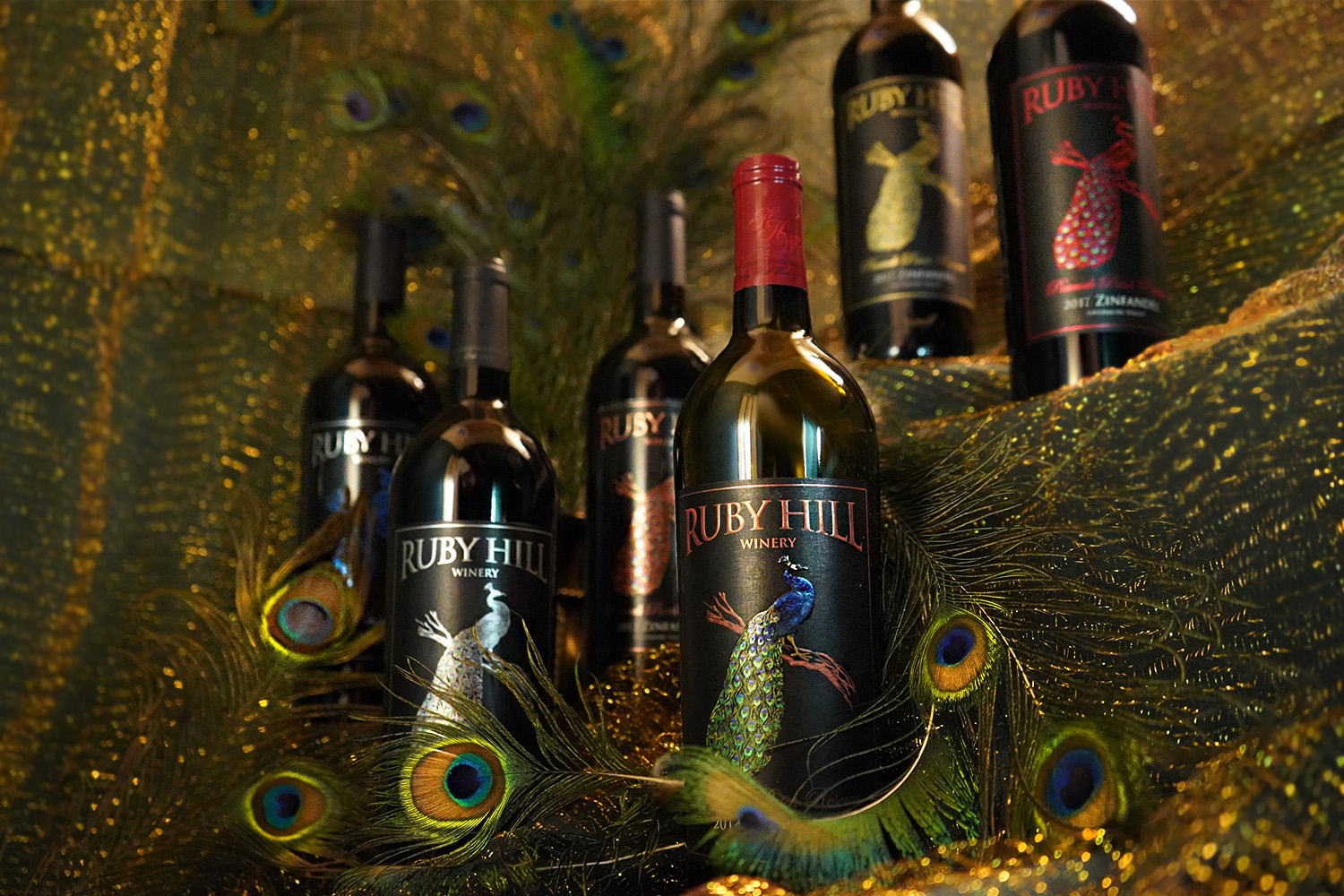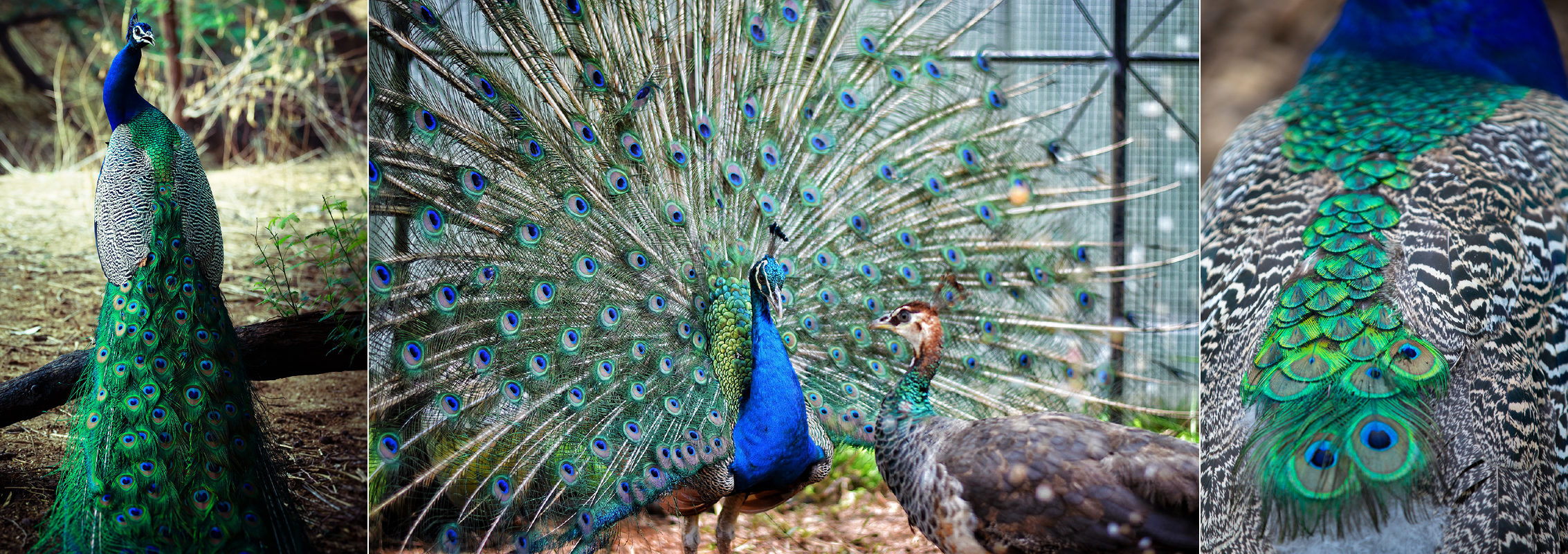Proud as a Peacock
 In the southwest corner of our estate vineyard, a block of Zinfandel vines grow in gravelly soil. The grapes produced by these vines are flavorful and bold, giving our Peacock Patch Zinfandel the most luxurious aromas and flavors. To celebrate the iridescent bird that graces our bottles, we wanted to share some fascinating facts about the peacock.
In the southwest corner of our estate vineyard, a block of Zinfandel vines grow in gravelly soil. The grapes produced by these vines are flavorful and bold, giving our Peacock Patch Zinfandel the most luxurious aromas and flavors. To celebrate the iridescent bird that graces our bottles, we wanted to share some fascinating facts about the peacock.
- Not all peacocks are actually called peacocks. The word “peacock” refers only to the males of the species peafowl. Females are called peahens and babies are called peachicks (not to be confused with chickpeas). Males are the most famous because they sport the characteristic kaleidoscopic plumage. Peahens and chicks are a dusty brown color.
- Peacocks’ “tail feathers” don’t actually grow from their tail. The iconic train of feathers grows from the males’ backs and drags gracefully behind them. The train can be made up of 200 individual metallic feathers with dazzling eyespots and gorgeous sheen. Even though their trains can weigh up to 13 pounds, all peafowl are capable of some flight, especially to escape predators. Peahens will sometimes allow their chicks to hitch a ride on their back to fly up to safety in the trees.
- Peacocks are cousins of pheasants, turkeys, and even domestic chickens. Similarly to chickens, peacocks like to roost in high places but will not be seen soaring through the sky. Peacocks prefer running to flying, with an impressive top speed of about 10 miles per hour.
- Peacocks are a natural alarm system. Their usual call sounds like a shrill cry. Wild peacocks’ cry can alert the surrounding forest inhabitants of a predator’s arrival. Not only do their cries outwit tigers, they are also said to signal the coming of rain—or even a monsoon. Peafowls make other expressive noises as well, including a sassy, subtle “honk” when annoyed.
- Peafowl are surprisingly adaptable. Native to the forests and lowlands of the Indian subcontinent, they have been introduced to new climates all over the world. Here in the Livermore valley, we are always enchanted to see the peacocks who visit our “Peacock Patch,” the block of Zinfandel grapes named in honor of these majestic birds.
- Peacocks appear in stories throughout history and across cultures. They are the national bird of India, often appearing in their mystical stories as harbingers of rain. In Greek tradition, peacocks were protected as sacred to the goddess Hera. In some legends of Robin Hood, the hero uses arrows with peacock feather fletching.
- Peacocks are reminiscent of phoenixes. Every year, peacocks go through a moulting season, wherein they shed all of the magnificent feathers from their train. Though their upper body remains a gorgeous, iridescent blue, their appearance more closely resembles peahens for a few months until their train regrows. For this reason, the peacock is heralded as similar to the mythological phoenix, losing and regaining its ornamentation in cycles.
- Peacocks are proud to strut their stuff. Fitting to their extravagant display of fanning their train, these fabulous birds have earned their place as a symbol of both pride and luxury. A group of peacocks is sometimes called a “party” or even an “ostentation.” These birds promenade through the forest, foraging together and relying on safety in numbers.

If safety is in numbers, make sure your Peacock Patch Zin
doesn't go home alone! This smooth wine is dense with fruit flavor
and pairs will with all your summer cookout dishes.
Get some while it's still on sale!
Comments
Commenting has been turned off.Enjoy complimentary ground shipping when you order 6 or more bottles.
Sign Up For Our Newsletter
Keep up to date on the latest wine releases, events, and promotions.